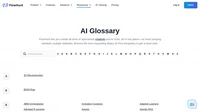In the world of artificial intelligence (AI), the term “moat” refers to a sustainable competitive advantage that differentiates a company from its competitors. Originally coined in traditional business contexts, the concept of a moat has been adapted to the AI landscape to describe the unique strengths that allow an AI-driven business to fend off competition and maintain its market position.
Understanding the Concept of Moats in AI
Traditional Moats Adapted for AI
The idea of a moat in AI builds on traditional business moats but adapts them to the unique challenges and opportunities presented by artificial intelligence. Here are some key examples:
- Economies of Scale: In AI, economies of scale are crucial, particularly in terms of computational resources. Training advanced AI models requires vast amounts of computing power, which can be more easily accessed by larger organizations like Microsoft, Google, and Amazon.
- Network Effects: Companies that can create a network effect around their AI products can build a formidable moat. For instance, platforms like AWS (Amazon Web Services) create ecosystems where the value of the service increases as more users join and contribute.
- Deep Tech/IP/Trade Secrets: Proprietary technology, intellectual property, and trade secrets form significant moats in AI. Companies that develop unique algorithms, models, or data processing techniques can maintain a competitive edge.
- High Switching Costs: Once a business or consumer is integrated into a particular AI ecosystem, switching to a competitor can be costly and complex, thereby creating a moat.
- Brand and Customer Loyalty: Established brands with strong customer loyalty can leverage their reputation to maintain a competitive advantage in the AI space.
Data Moats in AI
A particularly important type of moat in AI is the data moat. As AI models require extensive datasets for training and improvement, companies that can gather, process, and utilize vast amounts of high-quality data have a significant advantage. This data becomes a strategic asset that is difficult for competitors to replicate.
The Significance of Moats in AI
The significance of moats in AI cannot be overstated. As AI continues to revolutionize industries, companies that can establish and maintain these moats are better positioned to lead the market. Here are some reasons why moats are crucial in AI:
- Sustained Competitive Advantage: Moats enable companies to retain their market leadership over time, even as new competitors emerge.
- Barrier to Entry: Strong moats can act as a barrier to entry, discouraging new competitors from entering the market.
- Innovation and Investment: Companies with robust moats can invest more confidently in innovation, knowing that their competitive position is protected.
- Customer Retention: High switching costs and strong customer loyalty ensure that customers are less likely to switch to competitors.



